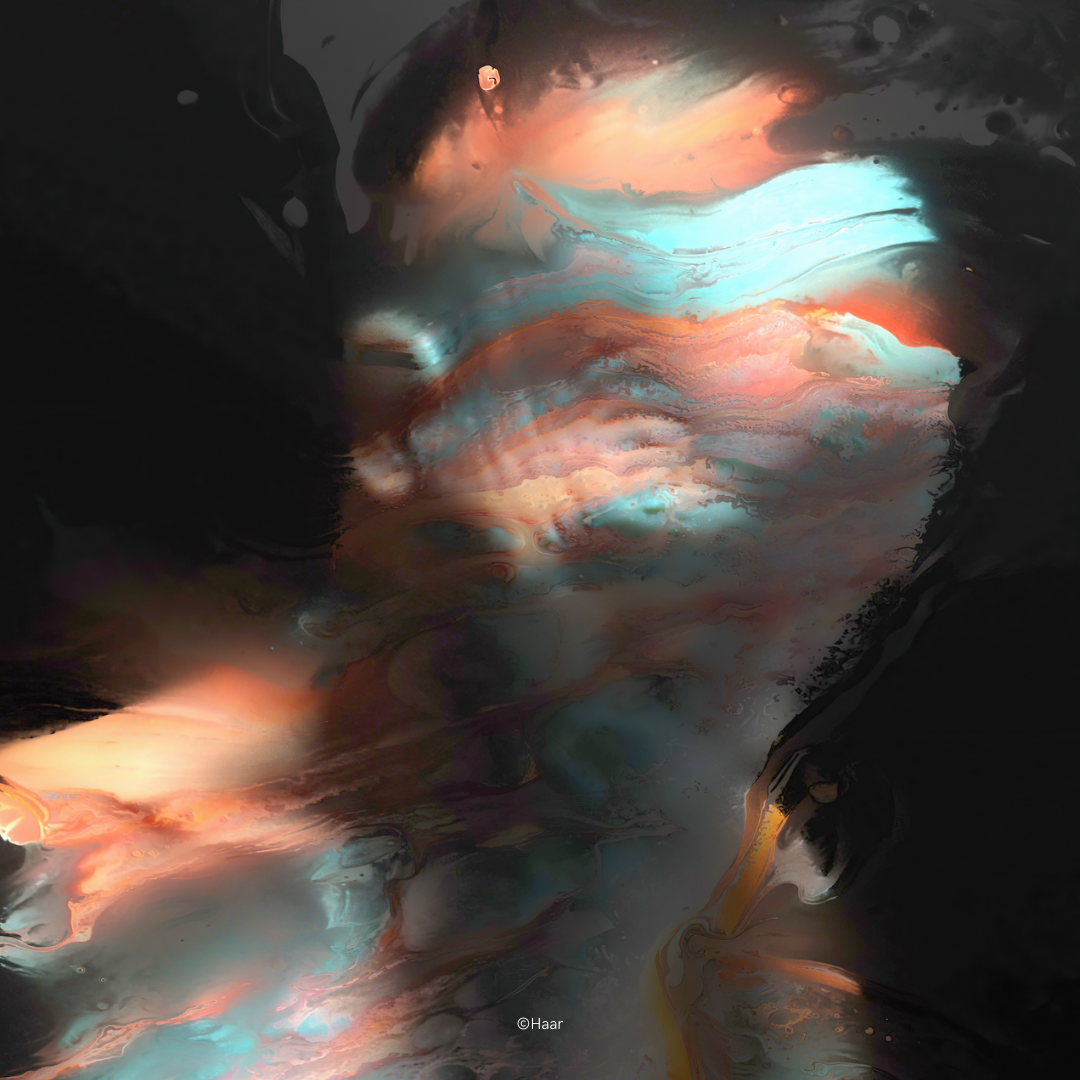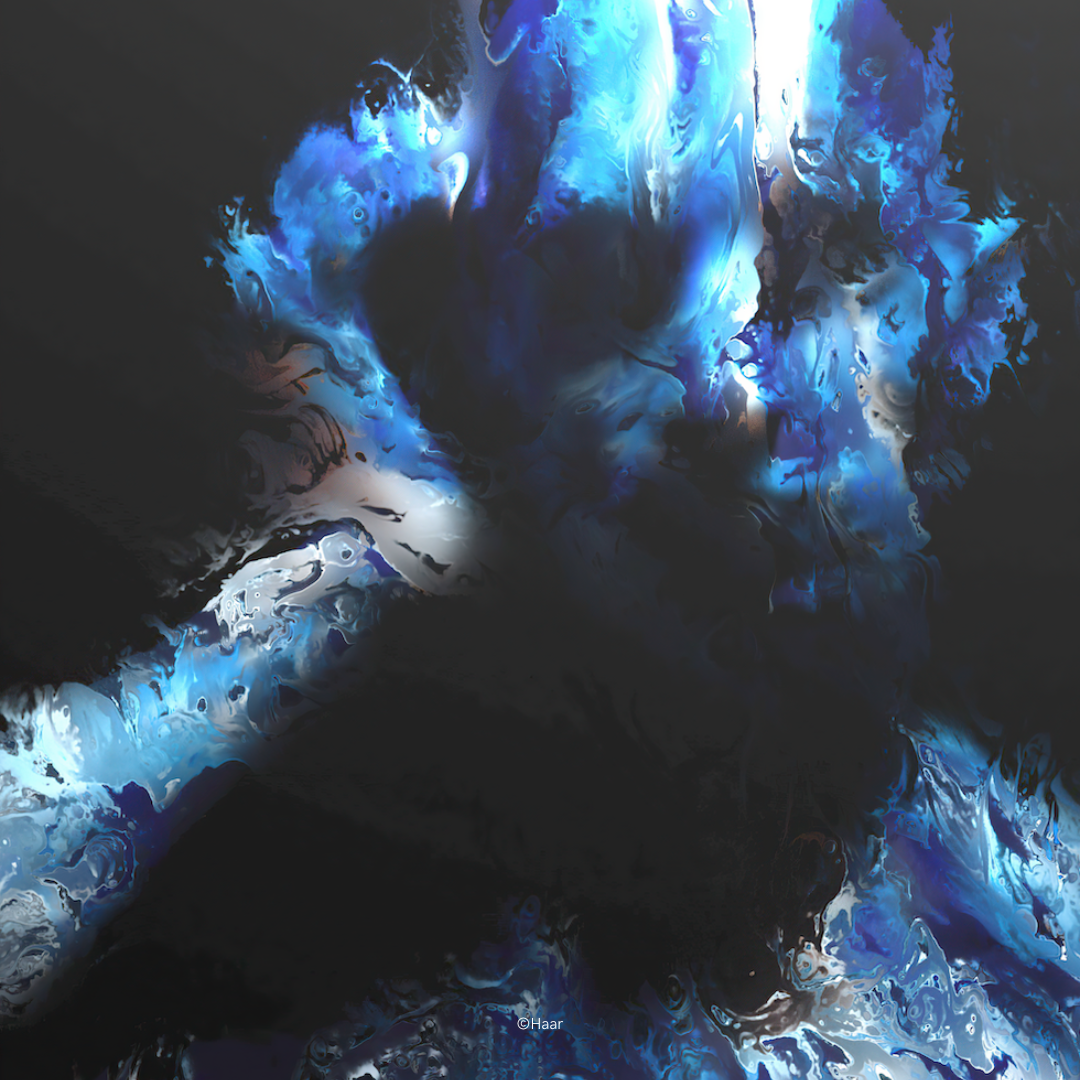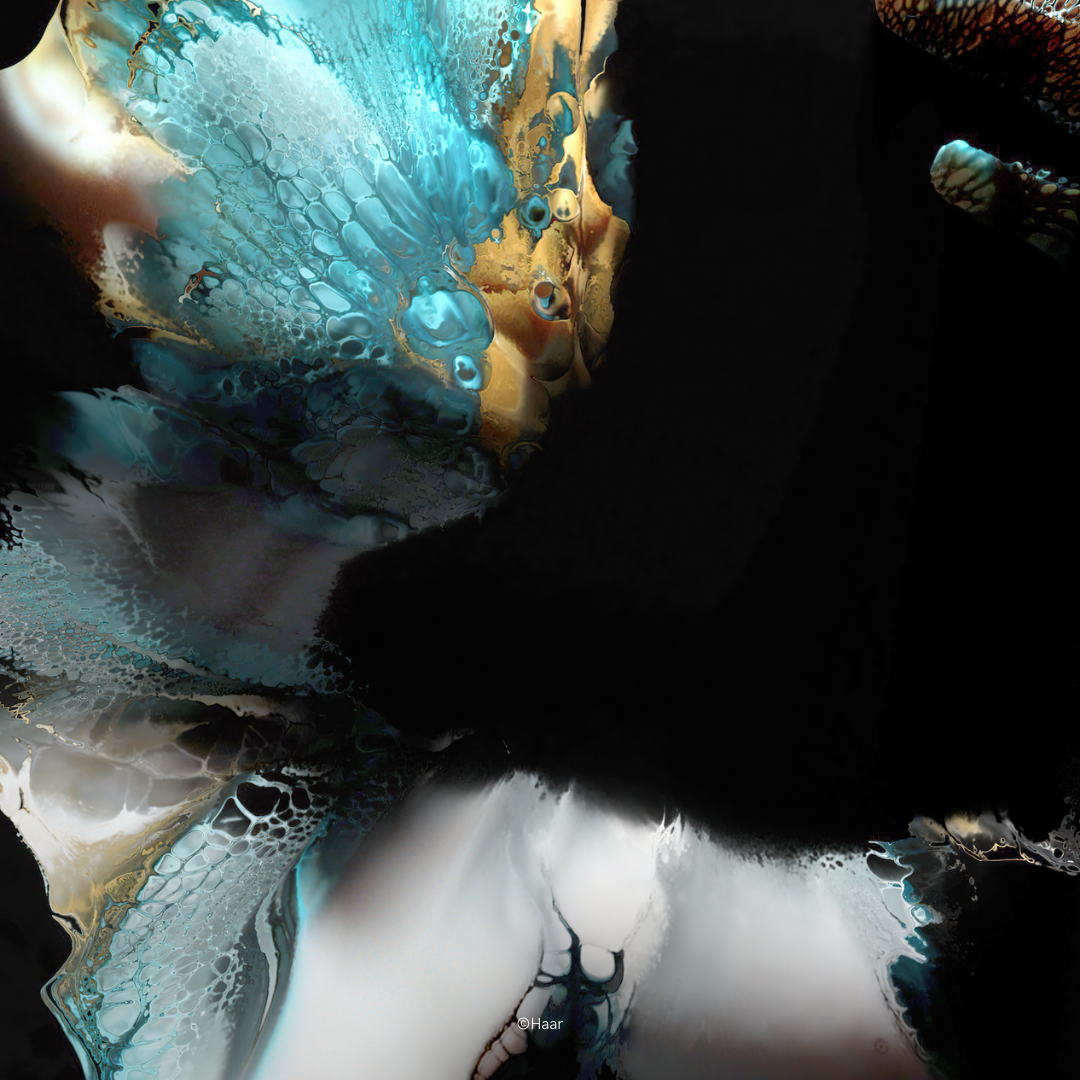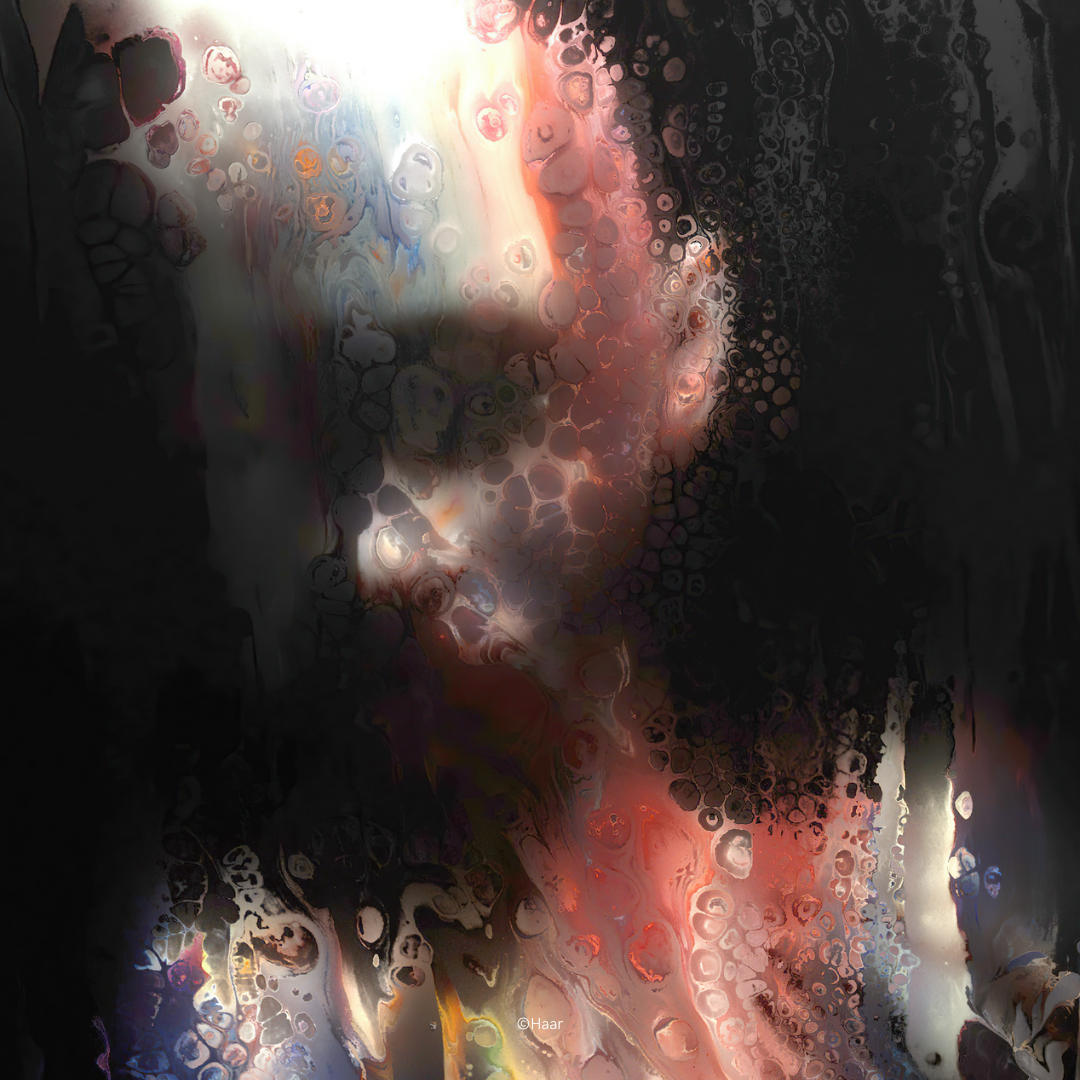Generative mutations
Stars of the Crash exhibition, which unveiled the NFT works of the Feride Ikiz collection during the 15th edition of the Contemporary Istanbul art fair in June 2021, and incredibly active on the Istanbul scene, the duo ha:ar operate a disturbing fusion between the real and the virtual. Work of the third kind, their penultimate opus, Electric mannerism, presented last year in London,1 Milan and Venice, proceeds from a digital transmutation, operated by the multimedia artist Arda Yalkın, of the bronze sculptures of his accomplice and partner, Hande Şekerciler. A virtual transposition and animation, via 3D modeling and digital video, all the more disturbing as Hande Şekerciler’s neo-mannerist sculptures are of a very polished and “academic” workmanship.


Nudes with perfect anatomies deployed in tender, lascivious or convulsive poses, very choreographic, implementing, on purpose, all the plasticity of the human body. Perfect anatomies which we discover are often duplicated… Dreamlike duplications or mutant bodies? Would these figures with a too-perfect plasticity and a strange duplicity anticipate the metamorphoses of a future post-humanity?
Dedicated to the random mutations of generative art (in which the images, according to an algorithmic system, generate themselves) in their digital transposition, they appear well as such: multiplied in deluges of bodies, agglutinated in clusters in the manner of the medieval or baroque representations of the fall of the damned at the time of the Last Judgment, these ghostly figures appear to be the living dead, equipped with grafts of skeleton, and spinning in evolving mists.
Produced by computer-generated imagery and presented in light boxes, these virtual paintings have been dubbed Impossible Sculptures by the artists: “although they are three-dimensional […], the volumetric structures of these works based on generative models could not be produced in the physical world.”


“Thanks to advances in technology, the limits of what is real are constantly being pushed back,” explains ha:ar, whose other series, titled Lucid (in reference to the notion of “lucid dream”), also pushes back the doors of utopian universes. In a sort of fluctuating post-modern imagery, we see a child’s face floating in murky waters (that could evoke amniotic fluid or the abyss) liquefying into shimmering marbles – reminiscent of the moving Cryptomarbles of another Turkish NFT artist, Ecem Dilan Köse, shown recently in the exhibition Now in Digital Art: Alternative Realities + NFT at the Akbank Sanat foundation in Istanbul.
For this Lucid series, Arda Yalkin explains that he was inspired by the luminous magic of Rembrandt’s portraits and those of his contemporaries, resulting from the use of a single source of artificial light, by manipulating this lighting “with generative liquid simulations.” An astonishing syncretism between the heritage of the old masters and the impermanence of the digital universe based on the indeterminacy of forms in perpetual metamorphosis.
- JD Malat Gallery / www.jdmalat.com
www.wearehaar.com
www.handesekerciler.com
Stéphanie Dulout
